“We see it as a commitment to serving musicians, music lovers, artists and fans. That’s the Gretsch religion”: Fred W. Gretsch tells the remarkable inside story of the family behind one of electric guitar’s oldest names
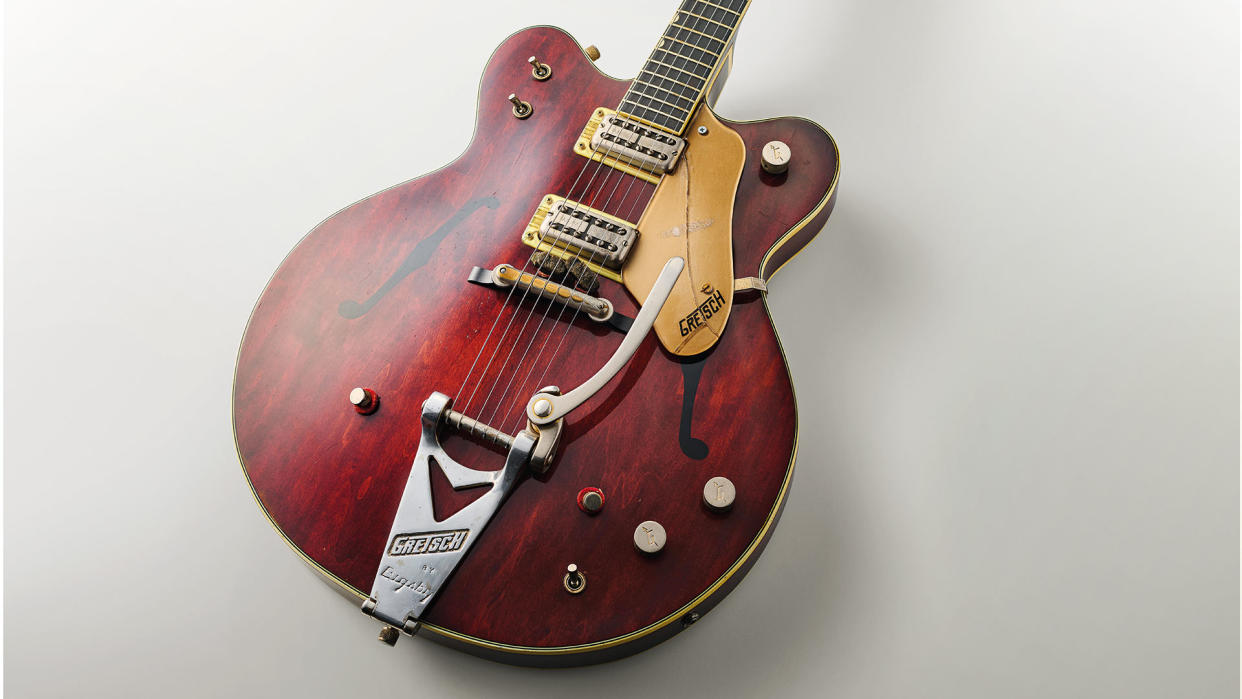
This year marks the 140th Anniversary of Gretsch. Fred W Gretsch started out in the business as the jazz years of the 1950s erupted into rock ’n’ roll uproar in the ’60s.
Much later, he guided the company back to prosperity as an electric guitar producer after the difficult Baldwin-owned years. Who better, then, to tell the inside story of how the company revolutionized guitar?
Women were the making of Gretsch
“The contribution of women to the business is seldom mentioned, but incredibly integral. My mother was a cheerleader for the business from 1942 to ’64 and, certainly, one of the reasons that I was in the business.
“My grandmother Charlotte, if we go back to 1904, married into the Gretsch family. She passed away in 1928. Next week it’s the 95th anniversary of her passing – unbelievable. In any case, she was engaged with the business for 24 years and she had three sons who were future leaders in the business.
The contribution of women to the business is seldom mentioned, but incredibly integral
“Without my mother’s encouragement and if she hadn’t kept the family in New York when dad died in ’48 – she was from Missouri – I wouldn’t have had a chance to visit the factory at 60 Broadway with my grandfather, as a young lad, and first experience Gretsch instrument production there.
“As I said, dad died in ’48 and his older brother, Fred Jr – who was my mentor in the business and encouraged me to work – took the bus from Forest Hills in Queens down Metropolitan Avenue, to the factory there, in Brooklyn.
“The bus fare was 15¢ back when I first took it in the 50s, and I worked there during the summer of ’58 as an office boy. I started there [full‑time] in ’65. So, if it hadn’t been for the women, us guys wouldn’t be around.”
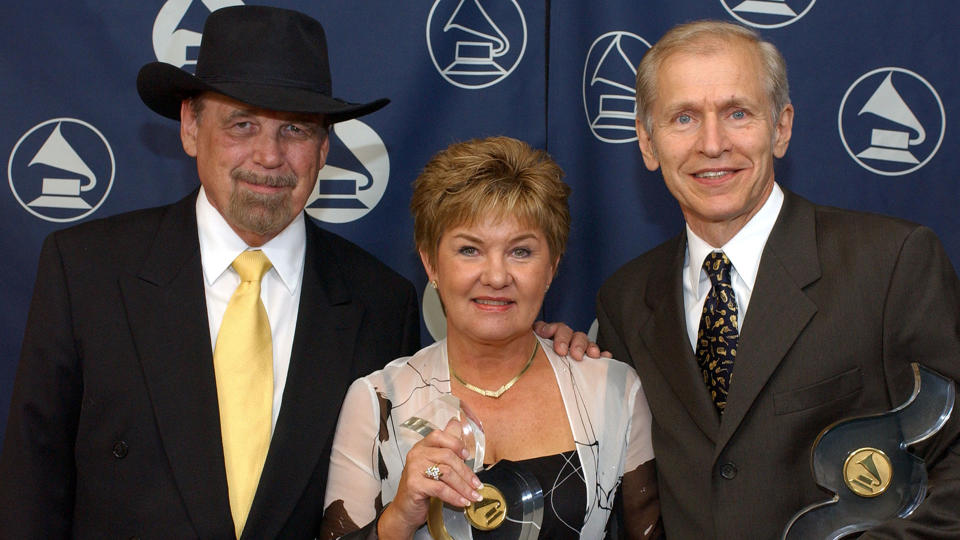
Gretsch was a lifelong calling
“A quick family sketch on the men: obviously the founder… his story is out there. I didn’t know him, of course, since he died in 1895. But his eldest son, my grandfather, I did know – and he first took me to the business in 1950. He was 36 years old when they completed that [Gretsch] building at 60 Broadway.
Grandpa engaged in the business from 1895 to 1952, an incredible 57 year
“Of course, we built all the Gretsch instruments there from 1916 to 1969, when Baldwin moved the business to Arkansas. In any case, grandpa engaged in the business from 1895 to 1952, an incredible 57 years.
“His oldest son, Fred Jr, graduated from Cornell University in 1926 and his middle son – my dad, Bill – came into the business in ’25 and worked until ’48, until he passed away.
“So, 57 years with grandpa in the business, 45 years with Fred Jr, 23 years with my dad… That’s the guys in the family story. I started in March of ’65, so I’m finishing 58 years this year. We see it as a commitment to serving the worldwide community of musicians, music lovers, artists and fans. That’s the Gretsch religion.”
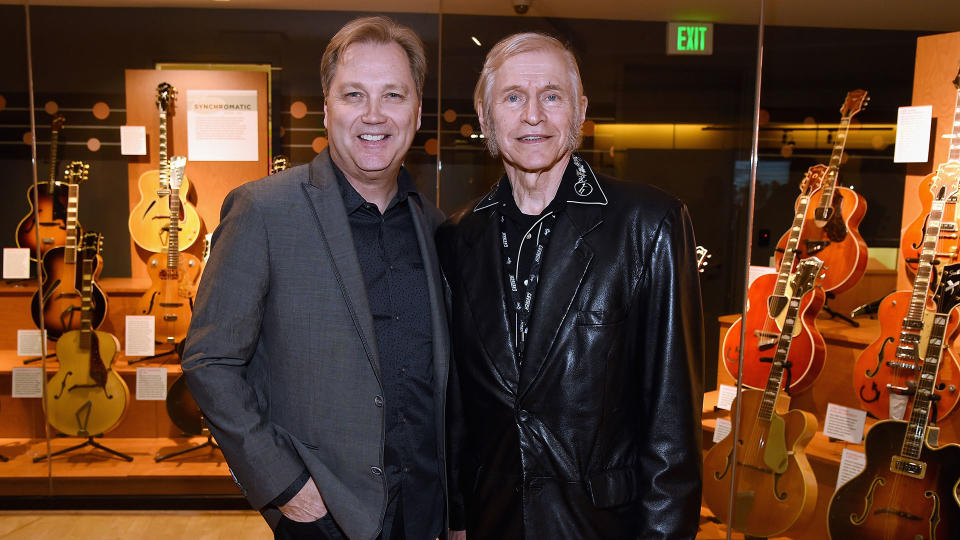
Webster was a prime mover
“Jimmie Webster joined Gretsch before the war, I think, which means he would have been hired by Fred Jr. Jimmie Webster is a key figure in the Gretsch business. He was a piano player, piano tuner and inventor and, obviously, a guitar player. Fast forward to 1959, Chet Atkins produced a record, Web’ster’s Un’a-bridged – it was in stereo, so he was a proponent of stereo guitar.
“In any case, in the early 50s, Jimmie was involved in [Gretsch] design, especially the forward-looking colors that we took from the auto industry and the changes in style that we got from the auto industry.
Chet Atkins made a call to his friend Les Paul to ask about the endorsement offer from Gretsch and, if anything, Les was positive about it.
“The US auto industry, after a very plain era before the war with few automobiles of any color at all, adopted all the color changes and frequent model changes of the 50s – which became the style of the guitar business.
“When Les Paul was hired to do a guitar with Ted McCarty at Gibson, we knew we needed to find our own endorser and Jimmie spent time with Chet Atkins and offered Chet a deal in 1953. Chet made a call to his friend Les to ask about the endorsement offer from Gretsch and, if anything, Les was positive about it.
“So the endorsement happened and the rest is history. The first Chet guitar was seen in 1954 and is still available and popular today. So many artists have played them, including Duane Eddy.”
Chet Atkins and Ray Butts
“Chet was an innovator extraordinaire with his production of music and his instruments – we were on the instruments side, of course – and it was Chet who tried the Ray Butts Filter’Tron pickup and recommended it to us and introduced Ray Butts to us. We purchased the patent and the rest is history.
“It wasn’t a matter of our working with Ray; it was Chet’s work with Ray on both amplifiers and on pickups, that he shared with his guitar-making partner, which was the Fred Gretsch Manufacturing Company, 60 Broadway, Brooklyn, New York.
“Ray was a glorious inventor, very successful, with some dark sides to his personality. In any case, he had some children whom we got to know over the years. His son passed on, but his daughters connected with TV Jones, who continues to innovate [while also undertaking] faithful reproductions of the early Ray Butts ideas, at the highest level of quality, which is TV Jones’ stock‑in-trade.”
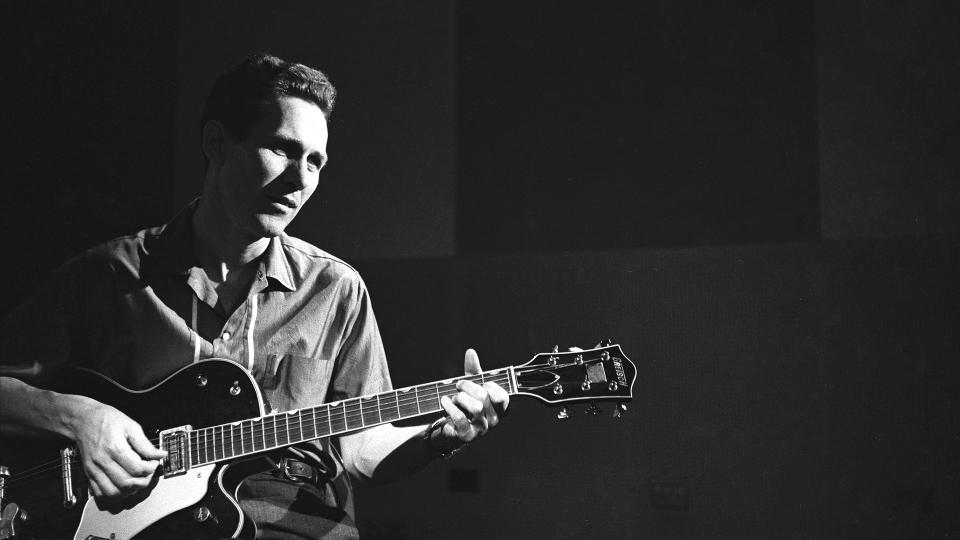
Fender and ‘peak accordion’
“Fender wasn’t [initially] regarded as a competitor because they made such an unusual guitar, the solidbody guitar, which was new at that point in time in the middle 50s. So Fender was unproven and rock ’n’ roll music was new.
“The Gretsch company was selling drums and guitars, and all manners of band instruments, through the Brooklyn office and a distribution centre in Chicago. Who knew what the future held?
The accordion people thought that their business was going up and rock ’n’ roll would go away. But it didn’t work out that way
“In fact, during the middle ’50s, accordions were a key part of the Gretsch business. When I visited 60 Broadway in Brooklyn and worked there in the summer of ’58, we had three or four technicians preparing accordions in addition to the drums and guitars we were making.
“The accordion business was very good in ’58. In fact, in the United States, 1958 is the year the accordion business peaked to its highest level. Whereas rock ’n’ roll was kind of just getting started.
“So the accordion people were feeling pretty good in ’58. They were having their best year ever. Rock ’n’ roll, they didn’t respect, they didn’t play. That was played with guitars at high volume levels. The accordion people thought that their business was going up and rock ’n’ roll would go away. But it didn’t work out that way.”
Gretsch goes solid
“If we skip forward to the year 1960, Fred Jr was running the business at the time… so he would have been 55 years old, rock ’n’ roll was coming on strong, but the British invasion hadn’t happened yet. But shortly thereafter we had so much business that it was necessary to expand production.
“We only had so much room in the Gretsch building because we had other tenants and had to move the drum production to another building on the other side of the bridge.
“That’s the time that we expanded the targets of our production, we moved our drum production to another facility, we initially moved the distribution business to that second location in Brooklyn, and eventually moved it entirely to Chicago.
Fender was growing like a rocket by this point, so we wanted to do something [to compete] that was [still unmistakably] a Gretsch
“The Duo Jet was a natural [response to the rise of] the solidbody business. Fender was growing like a rocket by this point, so we wanted to do something [to compete] that was [still unmistakably] a Gretsch.
“We used the pickups that were important to Gretsch guitars, which at the time were DeArmond single-coil pickups. We created a new, unique body shape. Obviously, Cliff Gallup played one and Cliff was one of the people who Jeff Beck looked up to.
“The constantly evolving features on Gretsch guitars were a sign of the times – those things were happening in the marketplace for automobiles and for refrigerators and stoves and washing machines.
“I know when Bo Diddley stopped in to see us at 60 Broadway and met Jimmie, Bo said he wanted to do something different and outrageous and Jimmie suggested, ‘Let’s do a rectangular guitar.’ It’s a legacy of innovation that we relish and enjoy today.”
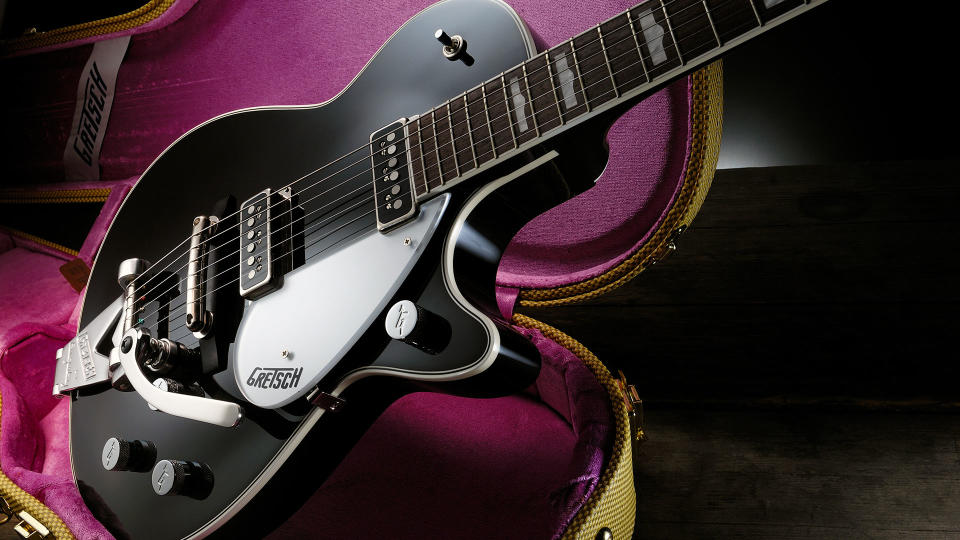
Family-owned once again
“The deal [to take Gretsch back into family ownership under Fred Gretsch] was signed in ’84 and I was in Cincinnati, Ohio, at the Baldwin office, then at 1801 Gilbert Avenue, Cincinnati, Ohio, at the point when Baldwin was just coming out of bankruptcy.
The piano guys looked around for someone to buy the guitar and drum business and it was us
“The parent company was bankrupt in ’83 and they sold the music assets to the piano guys and the piano guys looked around for someone to buy the guitar and drum business and it was us.
“It was a nice day in [October], happy to sign it, we agreed that they would run it through the end of the year of ’84 and we would take over the first day of January in ’85, and the announcement wouldn’t come until January.
The announcement came on 1 January, then we were at the January NAMM Show, which was just a drum exhibit, and then at the Frankfurt Musikmesse a couple of months later, which was just a drum exhibit – and we’re talking about January or perhaps February or March 1985 now.
“The assets that we acquired had to be brought back from Arkansas and from Mexico and stored in our facility in Ridgeland, South Carolina. Drums were being made in De Queen, Arkansas, along with pedal steel guitars, and later on that year we moved that production to Ridgeland, South Carolina, where it is still today.”
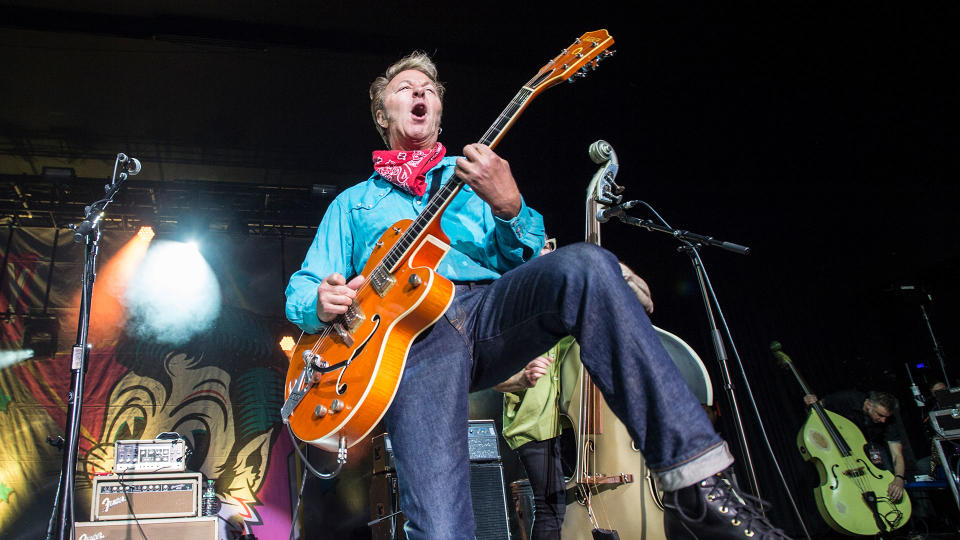
Guitar renaissance
“After restarting the guitar business from 1985, we didn’t get it going until ’88 and the first guitars were available late of ’89, so debuted at the Tokyo Show in October of ’89 and then the NAMM Show January of 1990.
The piano guys looked around for someone to buy the guitar and drum business and it was us
“I’m sure we were nervous: it involved a big investment in tooling and engineering to have the product re-emerge at the highest quality level. And we were only interested in doing it at the highest quality level. But the guitar business had come through tough times in the ’80s, so by the time ’89 came around and the ’90s, we saw there were strong guitar years ahead.
“Brian Setzer visited us at the drum factory in the 80s when he was touring with the Stray Cats. We knew Brian from early on and we cheered him on, as a proponent of Gretsch 6120 instruments, a meteor artist in rockabilly sound. Gretsch had an ownership in rockabilly going right back to Cliff Gallup – and Brian had grown up on Long Island.
“When the time came to begin production in Japan, we looked at all the options and we found the Terada family, who were building guitars the way we built them in Brooklyn and we had a good rapport with them.
“They have done an excellent job, over time, continuing the tradition of making Gretsch hollowbody and Duo Jet guitars and acoustic guitars, at the very highest quality level.”

